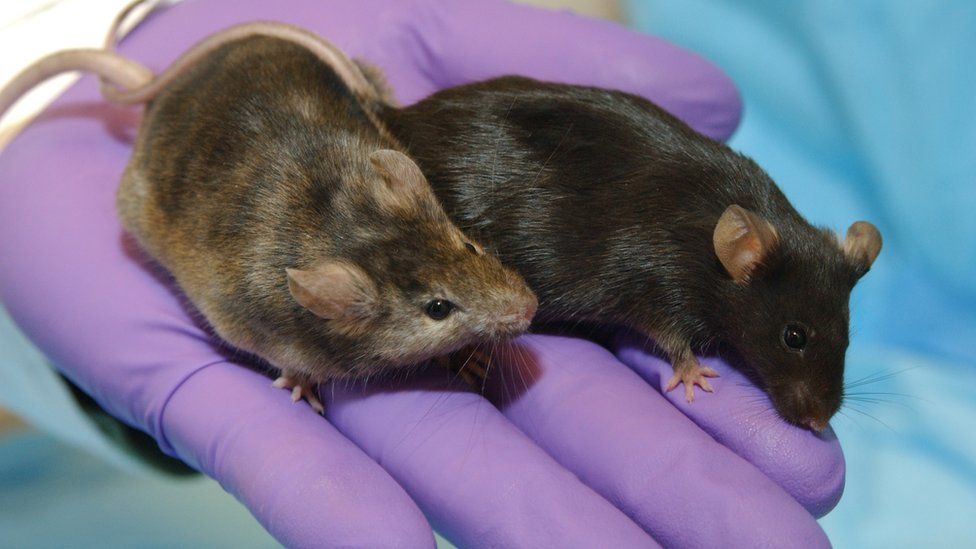UK lab animal numbers holding steady
- Published

New figures show that the usage of animals in UK labs is continuing at an almost identical rate to recent years.
4.14 million procedures were conducted in 2015, the Home Office announced on Wednesday, compared to 4.12 million in 2013 - the most relevant comparison.
Because of changes to the counting system, the total of 3.87 million recorded for 2014 was "artificially low" according to a spokesman.
Around half the "procedures" were GM animals, mostly mice, being born.
Thus, the total number of actual experimental procedures was 2.08 million.
For only the second time, the annual Home Office report categorised those experiments into five groups: "sub-threshold" (13%), "non-recovery" (6%), "mild" (51%), "moderate" (24%) and "severe" (6%).
This system is based on a 2010 European Directive, which was enshrined in UK law in 2013.
Experts said the implications of Brexit for these regulations were unclear.
"A lot of British scientists put a massive amount of effort into the directive," said Prof Roger Lemon, a neuroscientist at University College London.
"I'm still hopeful that even after Brexit there will be a lot of interaction between ourselves and our European counterparts, as we've seen in the short time since the vote.
"But obviously it does change things, in terms of the legislative dream that we had, that we would have a level playing field of procedures right across Europe. That has been dealt a very severe blow."
The chief inspector of the Home Office's Animals in Science Regulations Unit, Sue Houlton, said things were unlikely to change significantly within the UK.
"I think the UK public are going to be behind keeping something pretty similar to what we've got," she told the BBC.
"It remains uncertain how all of the legislation that we have in this country that stems from various European directives will actually be managed, in detail, as we go forward.
"[But] in the UK we hold animal welfare very dear, and I rather think that the fundamentals will not shift."
'Shocking increase'
In the total procedure count for 2015, some 61% involved mice, followed by 14% fish and 12% rats.
Well under 1% - amounting to 3,600 procedures - involved primates. This was an increase of 380 procedures from 2013.
This was decried as a "shocking" increase by the campaign group Cruelty Free International.
"The UK should be leading the way in reducing animal testing, yet we remain one of the world's largest users of animals in experiments," said chief executive Michelle Thew.
"We strongly urge the Government not to forget animals in laboratories, and to use Brexit as an opportunity to make a real impact in reducing the numbers of animals used in tests."
In fact, Brexit may influence these numbers entirely separately from any regulatory changes.
Dr Sarah Bailey is a pharmacologist at the University of Bath. Asked about the long-term trend in animal experiments, and whether the plateau seen in recent years would continue, she said:
"I should think it will either stay the same or go down, depending on the economic situation and the funding available for basic science.
"One of the big factors is the European Medicines Agency - whether they choose to stay in London or whether they relocate. The knock-on consequences for drug companies and drug development in the UK, as a consequence of that, could be potentially serious."
Follow Jonathan on Twitter
- Published22 October 2015
- Published10 July 2014